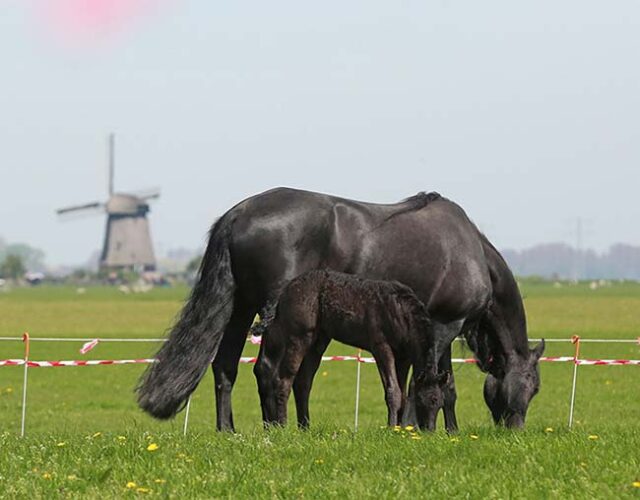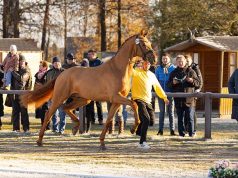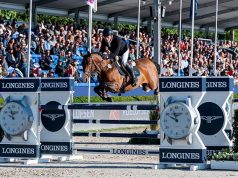By Body Bosgra / KFPS
Photography: Karin Sevink
At the end of last year, the KFPS Council of Members unanimously agreed to the proposal to co-finance the four-year PhD research project 'Conservation of the Friesian Horse'. Wageningen UR researchers Marije Steensma and Bart Ducro were thus given the green light to start their research.
For the KFPS, Phryso asked them about the purpose and background of the research and what breeders can expect from it.
According to Marije Steensma from Blessum, Friesland, the ‘Conservation of the Friesian Horse’ research is more than just a PhD. She is also personally involved with the Friesian horse; she has a Friesian broodmare with her father and is a board member of JongKFPS (KFPS Young Breeders). “After getting into Friesian horses through my grandfather, my interest in breeding and genetics grew. This is partly why I started studying animal science in Wageningen in 2017.”
For her PhD research, Marije is collaborating with Dr. Bart Ducro who specializes in genomics, the study of heredity and genes (DNA). He has a PhD in optimizing horse breeding programmes and has been closely involved with the Friesian horse for many years. For instance, he collaborated on the introduction of the kinship percentage and on the development of gene tests for water-head and dwarfism carriers in Friesian horses. Two instruments that are successfully applied and in the interests of good health in the Friesian horse breed.
Inbreeding problem
Despite the deployment of these tools, concerns about the health of the Friesian horse have not been completely mitigated. Bart explained; “In general, the Friesian horse has an inbreeding problem.” Inbreeding is the marriage between animals that are more or less related to each other, which carries risks, such as hereditary defects and fertility issues. He continued by saying; “We have been successful within the studbook so far if you look purely at the inbreeding increase. Over 20 years ago the inbreeding increase in Friesian horses was still around 1.5% per generation. Nowadays, it is around 0.5% and that is within the standards of the FAO (Food & Agriculture Organisation of the United Nations), which sets a maximum of 1% as the limit. So you might get the impression that we have the inbreeding problem under control, but we don't. As a result of excessive inbreeding in the past, new hereditary defects can still occur, such as oesophageal dilation. In America, the University of Kentucky, with funding from the Fenway Foundation, is conducting genetic research into this hereditary defect. Two years ago, it was reported from Kentucky that more than half of Friesian horses might be carriers of this hereditary defect. That suspicion, incidentally, has still not been confirmed, but it was a bombshell at the time. The message reopened the discussion as to whether we can solve the inbreeding problem and its consequences within the closed studbook of the KFPS.”
Importance of DNA testing
To judge the gravity of the problem of hereditary defects we still largely have to rely on what people report. And although this willingness to report has fortunately increased in recent years, we do not have enough reliable data to be able to properly assess the seriousness of the problem. Let alone that we can select for it without losing out on the genetic diversity of the Friesian horse... To read the complete article you need to be a subscriber
CLICK HERE TO SUBSCRIBE TO BREEDING NEWS
SUBSCRIBERS CAN READ THE COMPLETE ARTICLE BY LOGGING IN AND RETURNING TO THIS PAGE




